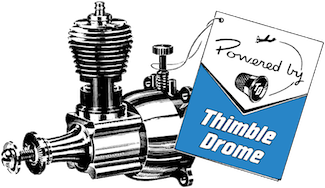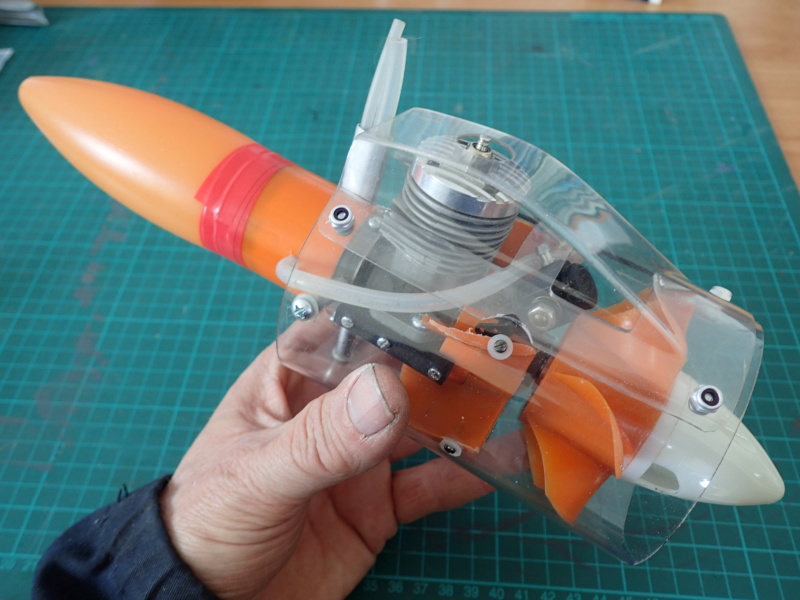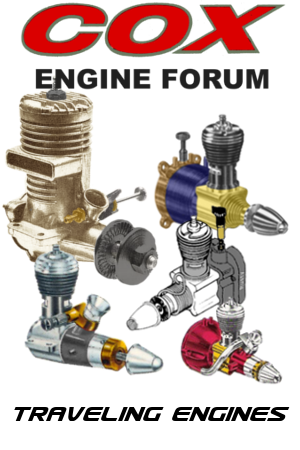Log in
Search
Latest topics
» Draco Goes Flying, But Misses the Eclipseby HalfaDave Today at 9:59 pm
» A prototype Cox Reed-valve marine engine
by davidll1984 Today at 9:15 pm
» music vids.. some of your favorites
by crankbndr Today at 7:26 pm
» Enya .09 II Questions
by Surfer_kris Today at 2:45 pm
» Wen Mac .049 - Conditioning.
by MauricioB Today at 12:21 pm
» Happy 53rd birthday Mauricio!!!
by MauricioB Today at 11:47 am
» Jim Walker Firebaby
by rdw777 Today at 11:22 am
» Testers Sprite engine swap
by Greenman38633 Today at 10:57 am
» UV Restore of Yellowed Decals
by Levent Suberk Today at 8:59 am
» 22mm 2-blade nylon marine prop and solid-shaft drive
by roddie Today at 6:46 am
» Post edit??
by roddie Today at 5:33 am
» Original Super Power fuel formula?
by HalfaDave Yesterday at 7:28 pm
Cox Engine of The Month
Pushrod testing
Page 1 of 1
 Pushrod testing
Pushrod testing
I've been using carbon fiber rod for pushrods lately. For the 1/2A stuff, I use .070 solid rod epoxied to brass ferrels. On short runs, they work without support, but need a midlength guide to prevent bowing on longer runs. There is essentially zero stretch. However, the rod is too light to use on .15 sized and up.
1/8" OD pultruded tubing seems to be about right with sufficient stiffness for larger models. However, I wasn't sure how well I could get the 1/16" wire to adhere in the ends or what might be the best adhesive. So the experiment ---
Pultruded CF Tubing: Purchased from Kitebuilder.com
ID: .068
OD: .125
Grams: 10.13
Length: 48"
Price: 3.33
I prepped the CF tubing with acetone wiping the outside and using an acetone soaked balse stick to swab the inside. I roughed up 1/16" wire with 80 grit and wiped with acetone. Brass ferrels about 3/16" long were cut and prepped. I made up two test rods, one using Elmers ProBond polyurethane and the second with 30 minute Hobby Poxy II. The wire was inserted 3/4" in both and both cured 24 hours.
I drilled a 1/8" hole in a 2x2 deep enough so that about 1/4" of tubing below the ferrel was exposed -- I wanted to see how well the wire was retained and not break the rod off. I set the 2x2 on a scale and pushed down on the wire end with a steel plate. At about 80 pounds, the epoxied wire was slowly pushed into the rod -- it was not an immediate breakdown, just slid in. I was able to load the ProBond up to 130 pounds, but it held.
Frankly, I was surprised that the ProBond beat the epoxy and that it held up at 130 pounds (tested it twice at 120 and once at 130). Bottom line is that either adhesive will produce a bond strength greater than any of the other parts on the model can withstand.


1/8" OD pultruded tubing seems to be about right with sufficient stiffness for larger models. However, I wasn't sure how well I could get the 1/16" wire to adhere in the ends or what might be the best adhesive. So the experiment ---
Pultruded CF Tubing: Purchased from Kitebuilder.com
ID: .068
OD: .125
Grams: 10.13
Length: 48"
Price: 3.33
I prepped the CF tubing with acetone wiping the outside and using an acetone soaked balse stick to swab the inside. I roughed up 1/16" wire with 80 grit and wiped with acetone. Brass ferrels about 3/16" long were cut and prepped. I made up two test rods, one using Elmers ProBond polyurethane and the second with 30 minute Hobby Poxy II. The wire was inserted 3/4" in both and both cured 24 hours.
I drilled a 1/8" hole in a 2x2 deep enough so that about 1/4" of tubing below the ferrel was exposed -- I wanted to see how well the wire was retained and not break the rod off. I set the 2x2 on a scale and pushed down on the wire end with a steel plate. At about 80 pounds, the epoxied wire was slowly pushed into the rod -- it was not an immediate breakdown, just slid in. I was able to load the ProBond up to 130 pounds, but it held.
Frankly, I was surprised that the ProBond beat the epoxy and that it held up at 130 pounds (tested it twice at 120 and once at 130). Bottom line is that either adhesive will produce a bond strength greater than any of the other parts on the model can withstand.


 A second test
A second test
I made up another pushrod -- 2" of pultruded 1/8" OD CF tube, 3/16" long brass ferrels, 1/16" wire pins. The wire was well roughed up and inserted 3/4". Everything was cleaned with acetone and one end was glued with Elmer's Probond (polyurethane that activates with water); I used JB Weld on the other end. The JB weld had set up about 43 hours; the ProBond has about 30 hours.
I could not manually pull the pins out. I wanted to have some sense of how much weight it would withstand, so I suspended a pair of vice-grips from a treelimb, snapped a second pair on the other end of the pushrod and stood on a scale. I weigh 210 -- so I pulled on the pushrod until the scale read 100 pounds -- I'm assuming that the rod was carrying about 110 pounds of pull. I figured if something broke, I could have a face full of vice-grip so I stopped. I loaded the rod to 110 pounds twice.
Results:
30 min. epoxy failed at 80 pounds of push.
ProBond loaded to 130 pounds of push without failure.
JB Weld and ProBond did not fail at 110 pounds of pull.
So, with a little care in cleaning and surface prep, either JB Weld or ProBond joints will give adhesion strength greater than the structural strength of most of our planes. I'm very impressed with the performance of ProBond -- one part and easy cleanup. One note of caution: Choose your carbon fiber tubing with an ID close to the wire size to avoid too much of an adhesive bridge.
The listed rod is a little heavy for 1/2A R/C, but you can now find a lot of thin wall tubing that will work nicely. ProBond or JB Weld is a good chioce for adding threaded rod or music wire for pushrod ends.
I could not manually pull the pins out. I wanted to have some sense of how much weight it would withstand, so I suspended a pair of vice-grips from a treelimb, snapped a second pair on the other end of the pushrod and stood on a scale. I weigh 210 -- so I pulled on the pushrod until the scale read 100 pounds -- I'm assuming that the rod was carrying about 110 pounds of pull. I figured if something broke, I could have a face full of vice-grip so I stopped. I loaded the rod to 110 pounds twice.
Results:
30 min. epoxy failed at 80 pounds of push.
ProBond loaded to 130 pounds of push without failure.
JB Weld and ProBond did not fail at 110 pounds of pull.
So, with a little care in cleaning and surface prep, either JB Weld or ProBond joints will give adhesion strength greater than the structural strength of most of our planes. I'm very impressed with the performance of ProBond -- one part and easy cleanup. One note of caution: Choose your carbon fiber tubing with an ID close to the wire size to avoid too much of an adhesive bridge.
The listed rod is a little heavy for 1/2A R/C, but you can now find a lot of thin wall tubing that will work nicely. ProBond or JB Weld is a good chioce for adding threaded rod or music wire for pushrod ends.
 Re: Pushrod testing
Re: Pushrod testing
Man! Another avenue...OK...guess I gots to get me some carbon rods now...!!!!!!!!!!!!
Thanks for the post! Probably gonna try this...!
Thanks for the post! Probably gonna try this...!

Kim- Top Poster




Posts : 8519
Join date : 2011-09-06
Location : South East Missouri
 Similar topics
Similar topics» a cheap sport muffler
» Testing 123
» Testing info
» Pushrod exit shroud
» experimental reed-valve test 5-5-18
» Testing 123
» Testing info
» Pushrod exit shroud
» experimental reed-valve test 5-5-18
Page 1 of 1
Permissions in this forum:
You cannot reply to topics in this forum

 Rules
Rules







